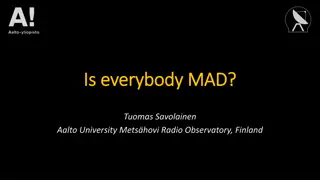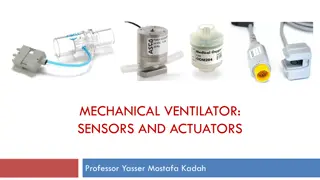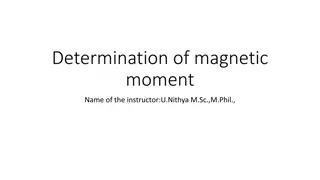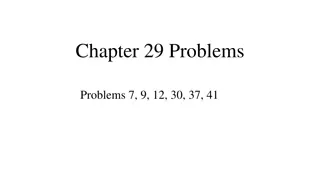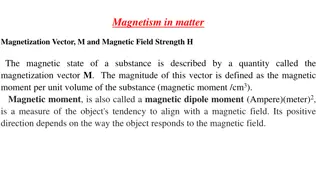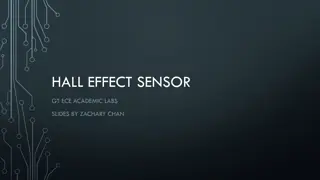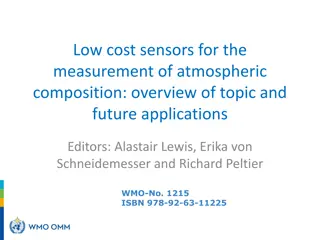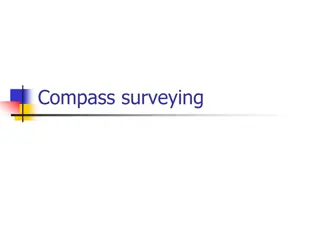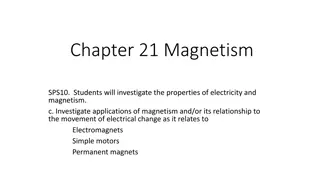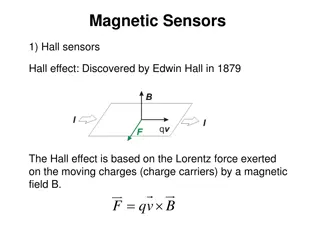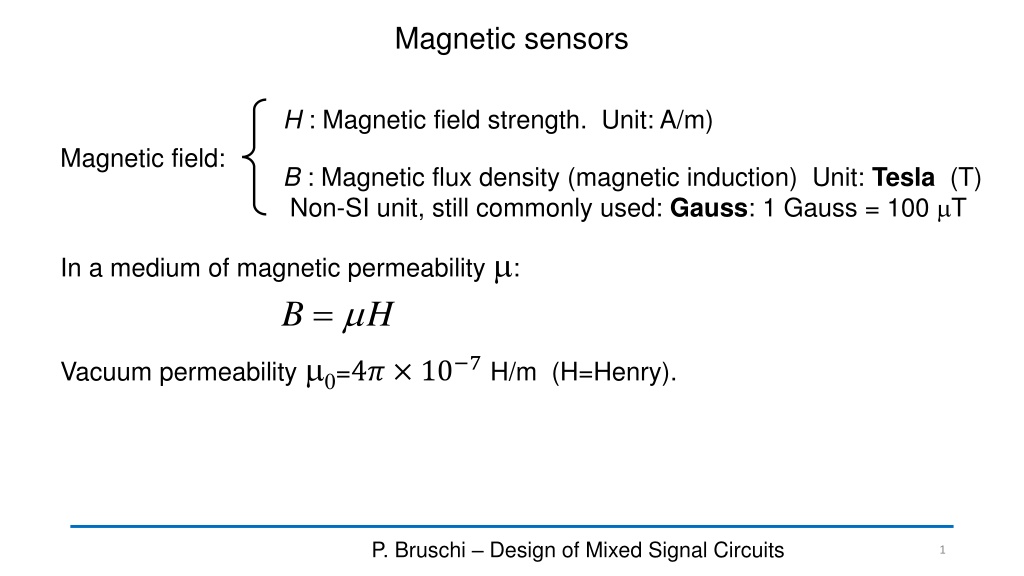
Magnetic Sensors and Applications Overview
Explore the world of magnetic sensors, including magnetic field strength, flux density, and permeability. Learn about their applications in navigation, compasses, and current measurements. Discover different types of sensors like Hall sensors and search coils, along with their working principles and significance in various industries.
Download Presentation

Please find below an Image/Link to download the presentation.
The content on the website is provided AS IS for your information and personal use only. It may not be sold, licensed, or shared on other websites without obtaining consent from the author. If you encounter any issues during the download, it is possible that the publisher has removed the file from their server.
You are allowed to download the files provided on this website for personal or commercial use, subject to the condition that they are used lawfully. All files are the property of their respective owners.
The content on the website is provided AS IS for your information and personal use only. It may not be sold, licensed, or shared on other websites without obtaining consent from the author.
E N D
Presentation Transcript
Magnetic sensors H : Magnetic field strength. Unit: A/m) Magnetic field: B : Magnetic flux density (magnetic induction) Unit: Tesla (T) Non-SI unit, still commonly used: Gauss: 1 Gauss = 100 T In a medium of magnetic permeability : = B H Vacuum permeability =4? 10 7H/m (H=Henry). P. Bruschi Design of Mixed Signal Circuits 1
Example of electric field magnitude Earth's magnetic field: 25 to 65 T Magnetic field produced by a current I H r B H = General purpose permanent magnets (e.g. "refrigerator magnets") Inside the gap of loudspeaker magnets: 1 T Example: = 0(air, vacuum ...) IM=1 A, r=10 cm IM r H = M 2 B=20 T Refrigerator magnets B=5-20 mT P. Bruschi Sensor Systems 2
Applications of magnetic sensors Aid to navigation Orientation finding Accuracy improvement of IMUs (inertial measurement units) Magnetic compass: Proximity sensors Angular position sensors Contactless current measurements P. Bruschi Sensor Systems 3
Magnetic sensors: market By Type (in automotive) By Application GMR 3-D Hall TMR AMR Hall P. Bruschi Sensor Systems 4
Types of magnetic sensors Heart and Brain magnetic field Earth's magnetic field Detection Limit P. Bruschi Sensor Systems 5
Search Coil B A ferromagnetic nucleus can be used to concentrate the field lines, increasing the sensitivity v im The search coil needs the magnetic flux to be variable. Constant magnetic fields can be measured only mechanically rotating or vibrating the coil. d dB dt AC Fields only! = N A v im dt ( ) ( ) = cos B B t = N A sin v B t M im M P. Bruschi Sensor Systems 6
Hall sensors Positive charge carriers Negative charge carriers Basic Hall effect: Discovered by Edwin Hall in 1879 Conductor or semiconductor plate Electrical current F: Lorentz Force = F v B I q The force has the same direction q: charge of the charge carrier (can be positive or negative) v: charge carrier velocity B: Magnetic induction field P. Bruschi Sensor Systems 7
Hall effect: formation of the Hall voltage y = = F F v B q qvB x Stationary conditions: = qE F Y = E vB Y W = = V E W vBW H Y P. Bruschi Sensor Systems 8
Hall Voltage = = = V V = = E W vBW CD H Y d v V E W X E W B V L H X = AB E z L y X x The Hall effect can be used to determine the carrier mobility V = AB L V W B H P. Bruschi Sensor Systems 9
Case of negative charges: The Hall voltage change sign if the sign of the charge charrier is changed The Hall effect can be used to determine if the main charge carries are holes or electrons V = AB L V W B H P. Bruschi Sensor Systems 10
Hall Voltage: a more practical expression I = = J qnv = V vBW H Wd d W J I I = = = v V B L H qn qnWd z qnd y The Hall voltage is proportional to both the magnetic field (B) and the bias current (I) x For this reason, the sensitivity is generally expressed in: V / (A T) "Volt per Ampere Tesla" P. Bruschi Sensor Systems 11
Examples of Hall voltage magnitude (possible thickness of an interconnection layer in an Integrated circuit) d=1 m d W 1 = I B V H qnd L Copper: ?~8 1022 cm 3= 8 1028 m 3 1 1 1.6 10 8 10 qnd = V/A/T 78 19 28 6 10 1 qnd= 625 V/A/T n-Si with ND=10-16 cm-3: n= ND= 1 1022 m 3 P. Bruschi Sensor Systems 12

